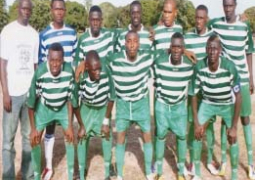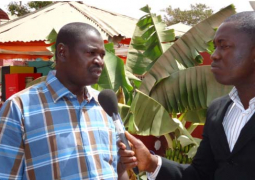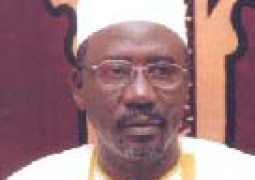Somewhere around the world, every second of every minute of every day, a child is being subjected to some form of abuse. Children whom are innocents entrusted to us to care for and bring up in the right manner don’t deserve to be subjected to injustices of any sort. Let us explore...
Child abuse is defined as the physical, sexual or emotional mistreatment of children or as any act or series of acts by a parent or guardian which results in the harming of, creating a potential for harm, or threat of harm to a child. Most child abuse occurs in a child’s home or dwelling place, with a smaller percentage occurring elsewhere like in schools or communities the child interacts with. There are four major categories of child abuse: neglect, physical abuse, psychological/emotional abuse, and child sexual abuse. It can result in death, serious physical or emotional harm or trauma, sexual abuse or exploitation, an act or failure to act which presents an imminent risk of serious harm”. Let us dissect the different aspects individually.
Neglect
Neglect has been defined as a situation where the responsible adult fails to provide adequately for the various needs of a minor, including physical (failure to provide adequate food, clothing, or hygiene, emotional including providing, nurturing and affection, educational and medical care). Neglect could also take the form of financial abuse by not buying the child adequate materials for survival.(29)
Physical abuse
This is the physical aggression directed at a child by an adult. It can involve striking, kicking, shoving, slapping, burning, bruising, pulling ears or hair, choking or shaking a child. The transmission of toxins to a child through its mother (such as with fetal alcohol syndrome) can also be considered physical abuse in some jurisdictions.
Most nations with child-abuse laws consider the infliction of physical injuries or actions that place the child in obvious risk of serious injury or death to be illegal. Beyond this, there is considerable variation. The distinction between child discipline and abuse is often poorly defined.
Sexual abuse
Child sexual abuse (CSA) is a form of child abuse in which an adult or older adolescent abuses a child for sexual stimulation. Forms of CSA include asking or pressuring a child to engage in sexual activities (regardless of the outcome).
The effects of child sexual abuse include depression, (13) post-traumatic stress disorder, (14) anxiety, propensity to re-victimization in adulthood, (16) and physical injury to the child, among other problems. Sexual abuse by a family member is a form of incest, and can result in more serious and long-term psychological trauma, especially in the case of parental incest. (18) Child sexual abuse is also strongly connected to the development of addictive behavior, complex post-traumatic stress disorder and borderline personality disorder.
Psychological/emotional abuse
Out of all the possible forms of abuse, emotional abuse is the hardest to define. It could include name-calling, ridicule, degradation, destruction of personal belongings, torture or destruction of a pet, excessive criticism, inappropriate or excessive demands, withholding communication, and routine labeling or humiliation
Victims of emotional abuse may react by distancing themselves from the abuser, internalizing the abusive words, or fighting back by insulting the abuser. Emotional abuse can result in abnormal or disrupted attachment disorder, a tendency for victims to blame themselves (self-blame) for the abuse, learned helplessness, and overly passive behavior.
A UNICEF report on child wellbeing has found that child neglect and child abuse were far more common in single-parent families than in families where both parents are present.
A child abuses have been known to end tragically in fatalities. A fatality is when a child’s death is the result of abuse or neglect, or when abuse and/or neglect are contributing factors to a child’s death Child abuse fatalities are widely recognized as being under-counted; some (who?) estimate that the number is 3.2 times higher than the reported count. Family situations which place children at risk include moving, unemployment, having non-family members living in the household. A number of policies and programs have been put into place to try to better understand and to prevent child abuse fatalities, including: safe haven laws, child fatality review teams, training for investigators, shaken baby syndrome prevention programs, and child abuse death laws which mandate harsher sentencing for taking the life of a child
New research illustrates that there are strong associations between exposure to child abuse in all its forms and higher rates of many chronic conditions. The strongest evidence comes from the Adverse Childhood Experiences (ACE's) series of studies which show correlations between exposure to abuse or neglect and higher rates in adulthood of chronic conditions, high-risk health behaviors and shortened lifespan.
Approximately 15% to 25% of women and 5% to 15% of men were abused when they were children. Most sexual abuse offenders are acquainted with their victims; approximately 30% are relatives of the child, most often brothers, fathers, mothers, uncles or cousins; around 60% are other acquaintances such as friends of the family, babysitters, or neighbors; strangers are the offenders in approximately 10% of child sexual abuse cases. (21)
Child abuse must not be confused at all with disciplining. Discipline is necessary for the proper development of a child into adulthood. However, abuse is inexcusable. Take a moment to think, studies show that children who have been abused have a greater probability of becoming abusers themselves. No one was born an axe murderer of a wife beater, and I will not attempt to make excuses for the crimes committed by felons of any kind. However, there are circumstances that shape the people we become. There is no better time than now to look deep within ourselves and contribute to the working cause to eradicate the vicious cycle that is child abuse. Let us make a difference today.





